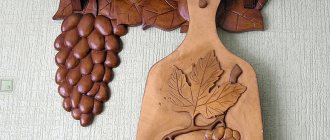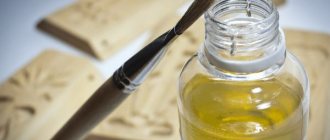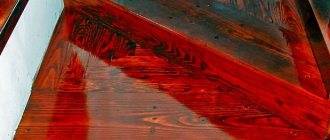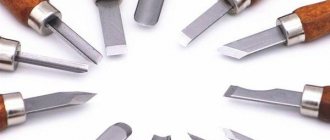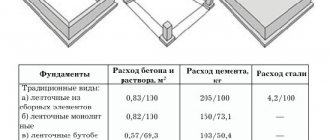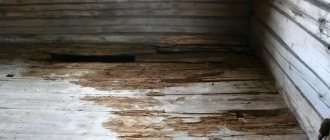Often, after finishing laying the flooring, the owners come up with the idea of varnishing the laminate. It is difficult to say why this desire arises, perhaps in order to protect the new cellulose fiber floor from swelling in the event of an unexpected water spill. In any case, the idea deserves attention.
Varnishing requires a lot of patience
Is it acceptable to varnish laminate flooring?
In general, laminate is an ordinary hard horizontal surface, which, on the one hand, can easily be subjected to such processing. But on the other hand, laminate manufacturers themselves strongly do not recommend varnishing it. At the same time, varnish manufacturers often claim that their products are also intended for laminate.
To figure out whether it is possible to varnish laminate flooring and whether it is worth doing it, you need to consider both sides of the issue.
Advantages of the procedure
When deciding whether laminate flooring can be varnished, reviews from people who have already done similar work are of great importance. They talk about the following:
• Laminate coated with several layers of varnish lasts 2-3 times longer than unprotected cladding.
• Using the right composition, you can easily get rid of dark scratches and dirt.
• The coating on which the varnish is applied is much less scratched, erased and dirty.
• Gloss varnish gives floors a glossy effect, making them more attractive.
When should you varnish laminate flooring?
The appearance of the laminate depends on the two top layers:
- Decorative layer - consisting of paper on which a print is applied, responsible for the appearance, imitating wood, stone or tile;
- Top protective layer that protects the coating from moisture and mechanical damage.
If the laminate is used very intensively, for example, it is laid in a room with high traffic, or furniture is actively moved at home, then on the surface, despite the protective layer, various defects such as abrasions, chips, and other things often appear. This often happens under the legs of chairs, under beds, cabinets and armchairs.
If such abrasions have already appeared and need to be masked, or the chance of their appearance is very high, varnishing the laminate can be the best option for saving the floor covering from premature replacement and extending its service life. The varnish will strengthen it and disguise defects.
Why are varnish coatings used?
When considering whether it is possible to varnish laminate flooring, it is worth knowing what this technique is used for. Main options:
- the surface of the lamella boards is damaged by animal claws;
- there are large scratches from various impacts; Read how to repair laminate flooring here.
- The wear of the laminate surface is great due to the period of use, abrasions, uneven reflection and other imperfections are observed.
The varnishing operation takes time and requires careful preparation. Therefore, thinking about whether it is possible to varnish a laminate, having bought a cheap variety and wanting to get an aristocratic shine and style, definitely does not make sense. Investments of money and labor do not compensate for the difference in cost.
Laminate requiring varnishing
Why is it not recommended to apply varnish to laminate flooring?
Although it is still possible to varnish laminate flooring, manufacturers have reasons why they do not recommend it.
Low degree of adhesion
The main reason why manufacturers do not recommend varnishing laminate flooring is its composition. The protective layer is a very durable smooth film that forms a monolithic surface. It has no pores, which ensures water resistance in modern laminates.
At the same time, it is precisely this quality that prevents varnishing - it will be almost impossible to achieve high-quality adhesion between the lamella and the varnish.
When wooden surfaces are treated with varnish, it is applied in at least two layers - first of all, the pores of the wood are filled, and the second layer consolidates the effect. When you try to varnish a laminate, the varnish will not penetrate deep into the structure of the lamella, the protection will be short-lived, and quite quickly the varnish will begin to peel off, will lag behind the base and may crack.
Floating floor effect
Low adhesion to the surface is not the only problem with varnishing the lamellas. Another obstacle to varnishing laminate flooring is that it is a floating floor. Periodically, the slats expand and contract, move a little, and they are fixed on the floor only by baseboards - laminate does not have a fixed base.
The slats are not fixed to each other in any way, except for the locking clutch, which is given a fairly free movement, which allows the laminate to change its structure without breakage or cracks. This “play” of the floor is almost invisible under normal conditions, but it will very quickly become noticeable on the integrity of the varnish coating.
Interesting! The technical gap between the wall and the laminate is necessary precisely because of the periodic expansion and contraction of the laminate when environmental conditions change. Otherwise, the floor may rise!
The expansion of any lamella will lead to the varnish cracking, and possibly not only on it, but also on its neighbors. If the varnish is firmly fixed and cracks subsequently appear, the protective film may also be damaged, and this reduces the resistance of the laminate to moisture - both during cleaning and when absorbing it from the air.
It is impossible to achieve immobility of the laminate; even if you try to fix it rigidly, bumps and cracks will quickly appear on the floor, and gaps will appear between the slats.
It is for these reasons that manufacturers do not recommend varnishing laminate flooring.
Wax
Wax is a universal protective coating known since ancient times.
After the laminate is treated with this composition, the properties of the coating will become much more functional.
It becomes immune to the influence of the external environment and moisture.
Remove excess with a tissue
Separately, it should be said about some features of using such protection:
- It is recommended to apply liquid or paste wax using a brush. The processing process occurs during installation of the material.
- Excess protective composition is removed with a napkin immediately after the laminating coating is completely laid.
- The wax from the tube is applied in a thick continuous layer and removed only after hardening.
Cracks and chips in the old coating can be easily rubbed over with a wax pencil. In this case, you need to apply it to the damaged area and rub it in thoroughly.
Deep scratches must be treated in several stages, with each layer applied only after the previous one has completely hardened. To learn how to protect laminated flooring from water, watch this video:
What kind of varnish can be used to varnish laminate flooring?
If you still need to varnish the laminate, then the first and main question that you will face is the choice of the type of varnish. Naturally, not just anyone will do.
It’s worth noting right away that parquet varnish should not be used under any circumstances; it is completely oriented towards the wooden surface and will not be able to adhere to the protective film.
The best way to choose a varnish is to find out what material is used in the base of the protective film. As a rule, similar materials have better adhesion and thus the interaction between the laminate and the varnish can be improved.
The following types of varnishes can be used for laminate:
- Acrylic;
- Epoxy;
- Polyurethane.
The safest among them is acrylic varnish; it also has the best adhesion to the surface if the protective layer of the lamellas also includes acrylic.
Before applying the varnish, it is necessary to check the composition of the protective layer. You can find out this information either on the laminate package or using the manufacturer’s data.
A relatively new product on the market is a specialized varnish designed specifically for working with laminate flooring. When developing it, the specifics of the surface to be coated were taken into account and it allows you to strengthen the protective layer, reliably sealing any chips and defects.
Important! You cannot use insulating, water-repellent and other compositions that are so widely advertised. They contain many aggressive metal salts that negatively affect the protective layer, and also often cause allergies when used in a confined space.
According to manufacturers, coating the laminate with such varnish immediately after installation will make it possible to much better protect the surface from mechanical influences of various types. Thus, there is a chance to extend the life of the floor finish.
An additional bonus is that after varnishing the floor will begin to shine beautifully, which many owners like.
Material selection
To get a good result, it is important to choose the right varnish. Let's figure out what paint and varnish material can be used. Before choosing a varnish, you need to clarify what composition the polymer film on the selected type of laminate has. Then you will need to choose a paint material on an appropriate basis. There are two options for film composition:
- acrylic;
- polyurethane.
This means that the varnish will need to be chosen, respectively, based on acrylic or polyurethane.
Advice! When choosing any materials for laminate care, you should give preference to those that are adapted for this coating. That is, the description must directly indicate that this product is suitable for laminate flooring.
In addition, you need to pay attention to the properties of the material. Primary requirements:
- the paint and varnish material should not have a strong odor, since it will be used indoors, and the presence of an odor will significantly complicate the life of residents. In addition, odorless products are usually harmless, while those with a strong smell contain harmful volatile solvents;
- the material must be quick-drying, because few people like the prospect of not entering the room for several days. If you use a quick-drying option, you can start using the room within a day;
- To ensure protective properties, you should purchase a fixing varnish that forms a dense film that prevents scratches.
How to properly varnish laminate flooring
The varnishing process is as simple as possible - provided you know the clear order of work and strictly adhere to a number of rules. This varnish coating will last quite a long time and it will be possible to avoid those negative consequences that the manufacturer warns about.
Surface preparation
The main enemy of varnish is not so much moisture and fine dirt, but ordinary dust, of which there is always a lot. If dust remains on the surface before applying varnish, then after drying it will remain rough.
The surface is prepared in two stages. First, dry cleaning is carried out - dust is wiped off from any possible surfaces, after which all sources of communication with the street are closed - windows, transoms, ventilators, etc.
After this, use a vacuum cleaner with a thin attachment to vacuum the joints between the slats, then wipe the laminate with a barely damp cloth, and remove excess moisture with a dry cloth. All this will allow you to ideally prepare the surface for applying varnish.
Surface preparation
Before applying varnish, the surface of the laminate must be thoroughly prepared. She is not cycled. A thorough wet and dry cleaning is carried out, before which all joint areas of the installation elements are carefully examined to remove dust and other contaminants. Subsequent preparation consists of masking and protecting the damaged areas. For this they produce:
- masking minor scratches. This is done using special polymer products, which are usually offered in the same stores where laminate varnish is sold;
- protection of deep scratches that have reached the base of the flooring - MDF boards. This is done using PVA glue. If the amount of damage is large, you can add dyes to it so as not to change the average color of the surface;
- if necessary, use special type putty melts to fill large damages;
- masking damage in the form of wide rubbed scratches using a wax pencil.
To improve adhesion, the surface of the laminate flooring installation elements is treated with very fine sandpaper. This must be done carefully, ensuring a slight roughness without noticeably disturbing the color of the coating.
